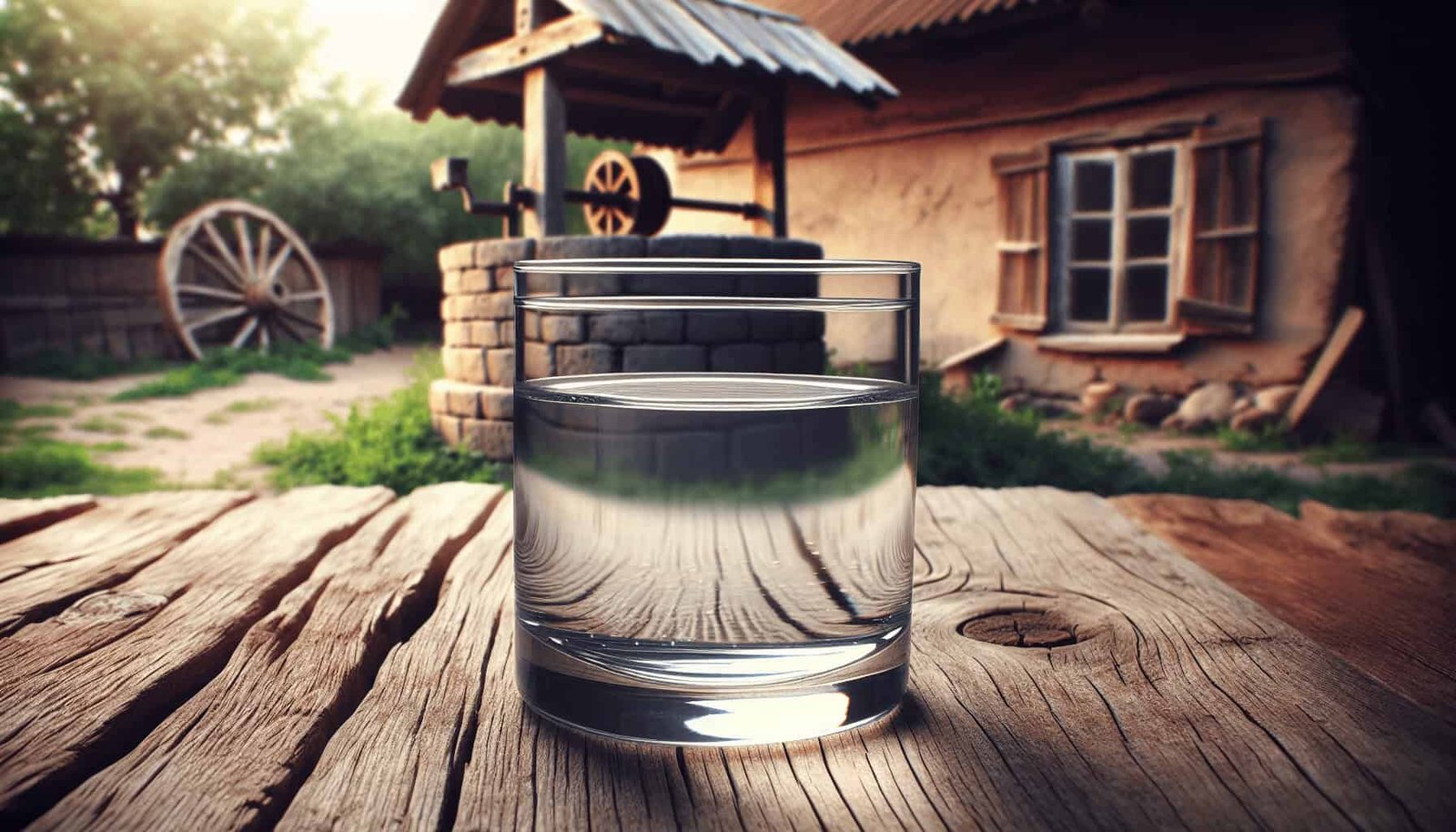What should you do if your well water becomes cloudy?
It’s certainly concerning to discover that your well water, which you rely on for daily use, has taken on a cloudy appearance. There can be several reasons behind this phenomenon, some of which may pose health risks while others could be the result of relatively harmless particles. Understanding the potential causes and knowing the appropriate steps to address them is crucial. Let’s explore the steps you should take if your well water becomes cloudy.
Understanding Cloudy Well Water
The first step you need to take is to understand why your well water might be cloudy. Cloudiness can result from a variety of factors ranging from harmless sediments to potentially harmful contaminants. It will guide you through eliminating or verifying each potential cause.
Common Causes of Cloudy Well Water
Cloudy water is more than just an inconvenience. It can signal an underlying issue with your well or the water supply. Here are some common reasons your well water might be cloudy:
- Sediment: Often, the cloudiness is simply the result of suspended particles like sand, silt, or clay. This is especially common after heavy rain or if you have recently had work done on your well.
- Air Bubbles: Sometimes what appears to be cloudiness is merely air trapped in the water. The water will typically clear up after being drawn into a glass for a few minutes.
- Organic Material: Decomposing organic matter in your well can cause the cloudiness. This could be leaves, small animals, or other debris.
- Contaminants: Potentially harmful bacteria, fungi, and other microorganisms could be causing the water to appear murky.
- Minerals: High levels of iron, manganese, or other minerals can also cause discoloration and turbidity.
Assess the Cloudiness
You need to determine whether the cloudiness is a cosmetic issue or if it requires immediate attention. Here’s a basic and straightforward check:
- Collect Water Sample: Take a clear glass and fill it with water from your tap.
- Observe: Let it sit undisturbed for a few minutes.
- Check for Sedimentation: If the cloudiness starts to settle at the bottom, you likely have sediment. If the water clears up quickly, you may be dealing with air bubbles.
- Persistent Cloudiness: If the water remains cloudy, it’s likely due to organic material, bacteria, or high mineral content. This should prompt further investigation.

Conduct Initial Tests
Before calling a professional, there are some initial tests you can perform at home to assess the problem with greater precision. Simple tests can help you rule out or confirm certain causes of the cloudiness.
DIY Test for Air Bubbles
To see if the cloudiness may be from air bubbles, you can conduct this quick test:
- Fill a Clear Glass: Use the tap to fill a clear glass with water.
- Wait and Observe: Let it sit for about five minutes.
- Analyze: If the cloudiness dissipates, air bubbles are the likely culprit. If it remains cloudy, proceed to check for sediments and contaminants.
Test for Sediment
For sediment:
- Settle Test: Fill a clear jar with water and let it sit undisturbed for several hours, preferably overnight.
- Examine the Jar: If sediment has sunk to the bottom, that’s a strong indicator that particles are causing the cloudiness.
Smell Test
Giving your water a good whiff can tell you a lot:
- Sulfur Smell: An odor resembling rotten eggs often indicates hydrogen sulfide, a byproduct of certain bacteria.
- Metallic Smell: A metallic smell can be due to high levels of minerals like iron or manganese.
- Earthy Smell: An earthy or musty odor could signal the presence of organic compounds, possibly from decaying vegetation or microbial activity.
Use pH Strips
pH levels can offer clues about your water’s quality:
- Testing: Use pH strips, available at most hardware or pool stores.
- Reading: A pH level significantly below or above 7 can indicate chemical imbalances that might contribute to cloudiness.

Professional Analysis
If your initial tests didn’t clarify the cause, it’s time to call in a professional laboratory or water service to perform a comprehensive water analysis.
Hire a Laboratory
Hiring a qualified laboratory to test your water is the most foolproof way to identify contaminants and make sure your water is safe.
- Choose a Certified Lab: Find a state-certified laboratory for water testing.
- Collect Sample: Follow their guidelines to collect a water sample. This usually involves using a sterilized container and making sure the sample gets to the lab quickly.
- Tests Conducted: The lab will typically check for bacteria, nitrates, pH, iron, manganese, and other potential contaminants.
Consult a Water Specialist
Water specialists can provide immediate insights and often have the tools to diagnose issues on-site.
- On-Site Testing: They can perform various tests to check sediment levels, bacterial contamination, and mineral content.
- Well Inspection: They may inspect the well structure itself for any signs of damage or contamination sources.

Addressing the Cloudiness
Once you’ve identified the cause of the cloudiness, you can take appropriate action to treat your well water. Addressing the problem effectively will ensure safe, clean water.
Filtration Systems
A filtration system can often handle various causes of cloudiness. Here are some options:
| Type of Filtration | Purpose |
|---|---|
| Sediment Filters | Remove larger particles like sand and silt |
| Carbon Filters | Remove organic material and improve taste |
| Reverse Osmosis | Remove dissolved salts, minerals, and contaminants |
| UV Purifiers | Kill bacteria and pathogens |
Shock Chlorination
Shock chlorination is an effective way to eliminate bacteria and organic material from your well:
- Calculate Chlorine Amount: Determine the proper amount of chlorine for your well size (usually about one gallon of bleach per 100 feet of well depth).
- Distribute Chlorine: Pour the chlorine down the well and recirculate the water until you smell chlorine from every faucet.
- Flush System: Let the water sit for at least 12 hours, then flush it until the chlorine odor dissipates.
Install a Water Softener
If high mineral content is the culprit, a water softener can help:
- Select a System: Choose a water softening system appropriate for your home size and water usage.
- Install: Either hire a professional to install it or follow instructions to set it up yourself.
Regular System Maintenance
Once the immediate issue is resolved, ensuring that your water remains clear and safe involves consistent maintenance of your well and treatment systems.
Scheduled Inspections
Perform regular inspections on your well and filtration systems:
- Annual Inspections: Have a professional inspect your well annually for any signs of trouble.
- Filter Changes: Change filters according to manufacturer recommendations, which is often every few months.
Sample Testing
Even after solving the cloudy water issue, continue to regularly test your water:
- Quarterly Tests: Perform DIY tests for sediment, air bubbles, pH levels, and smell at least every three months.
- Annual Lab Tests: Have your water professionally tested at least once a year.
Emergency Procedures
Know what to do if you suddenly experience cloudy water again:
- Immediate Boiling: Boil the water before use to kill any possible bacteria.
- Contact Professionals: Engage with a well water specialist to assess and address any issues.

Preventative Measures
Preventing future occurrences of cloudy well water is always better than dealing with the fallout. Being proactive can save you both time and effort.
Maintain Well Integrity
Ensure that your well is properly maintained:
- Regular Cleaning: Periodically clean the well to remove debris and sediment buildup.
- Cap Check: Ensure the well cap is secure to prevent contaminants from entering.
Manage Water Flow
Managing how the water is drawn from your well can make a significant difference:
- Avoid Overuse: Overdrawing water can stir up sediment.
- Install Pressure Regulators: These can help maintain steady water flow.
Protect Surroundings
Keep the area around your well clean and free from pollutants:
- Clear Debris: Remove leaves, dirt, and other debris regularly.
- Keep Septic Systems Distant: Make sure septic systems are far from the well.
Seal Wellheads
Sealing wellheads helps protect against contaminants:
- Professional Inspection: Have a well specialist inspect the wellhead seal.
- Proper Grouting: Ensure proper grouting around the well to prevent surface contaminants from leaching in.

Summary
Dealing with cloudy well water can be unsettling, but by taking the correct steps to identify and address the issue, you can ensure your water remains safe and clear. Initial at-home tests can provide clues, but professional analysis offers the most accurate insights. From installing filters to proper system maintenance, addressing and preventing cloudy water involves a multi-step process that ultimately protects your health and provides peace of mind.
Always remember that maintaining a clean well is an ongoing responsibility. Being proactive with regular testing, inspections, and necessary treatments will ensure that your well water stays clear and safe for consumption.
